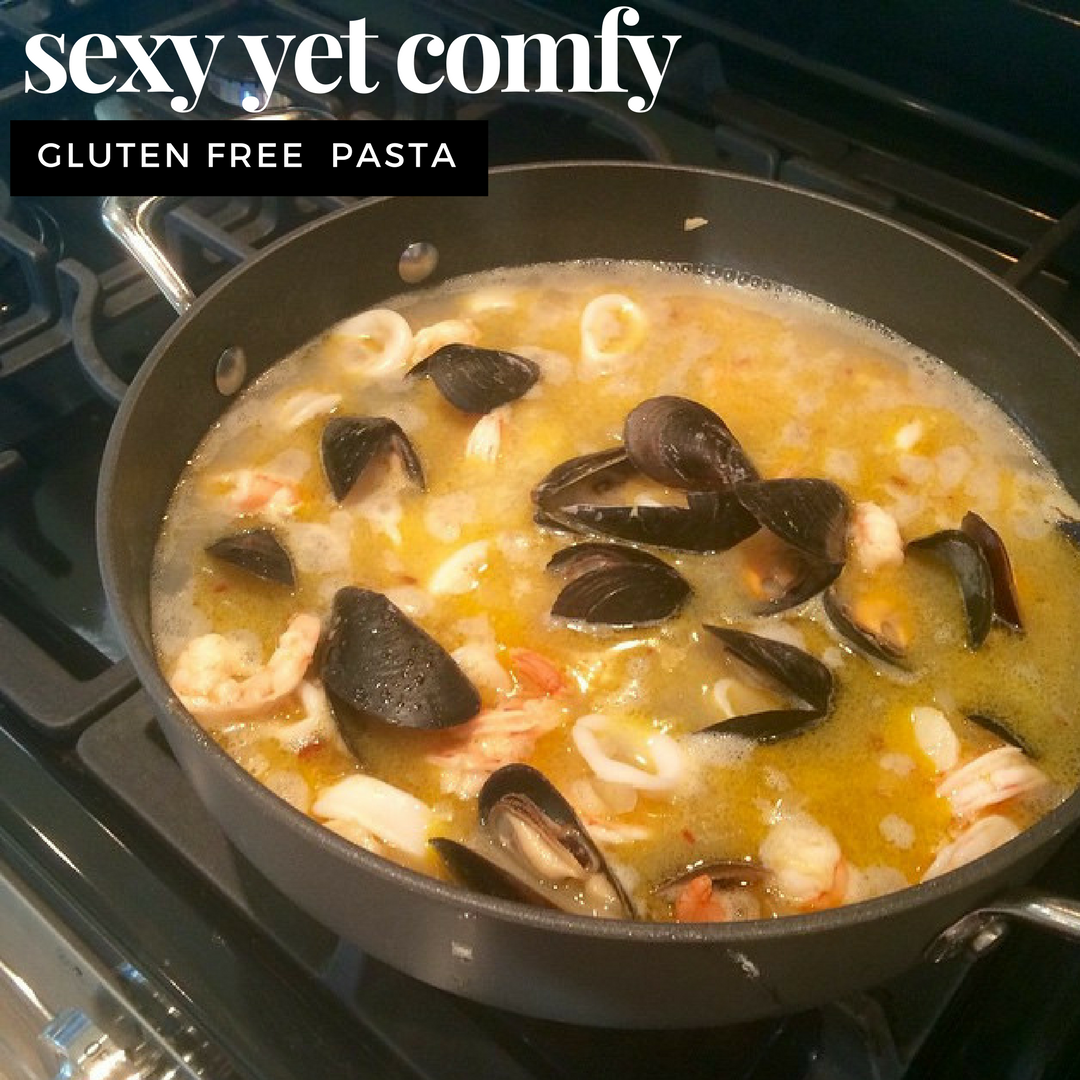Food Recipes | Wellness Wednesday
01 Mar 2017 / NAFCWellness Wednesday Recipes - March 2017 | Ed 1
Best Ways to Optimize Fats
By Tammy LeBoss | thefitprofoodie.com

We’ve all heard about the health benefits of olive oil.
Embraced by many health nuts, ‘good fats’ such as olive oil, fish oil, coconut oil, avocado and walnuts are known to fight inflammation, reduce risk of heart disease, and reduce the likelihood of Alzheimer’s disease.
Many of us cook with olive oil, but did you know that olive oil is only good for us when it’s used cold? Increased heat can increase the likelihood of oxidation. In fact, it's important to realize olive oil is not necessarily good for cooking. Why? Due to its chemical structure and a large amount of monounsaturated fats such as oleic acid, heating olive oil when cooking can turn this good fat into a bad one. To learn more, geek out on science with NAFC’s Nutrition Coach and find out how heat can actually damage certain foods, changing their molecular structure(s) so they’re no longer beneficial to our health.
Concerned about oxidation and rancidity? Try cooking with coconut oil. It is the ideal choice because it’s a vegetable fat stable enough to resist heat-induced damage. Protect your oils from going bad; store foods, namely good oils away from sunlight and heat.
Here are more tips for protecting and optimizing your food oils:
- Keep in a cool, dark place -darkness is key because light will definitely oxidize the fats in olive oil and other good fats;
- Purchase smaller bottles rather than larger to ensure freshness
- Immediately replace the cap after each pour, keeping bottles tightly capped;
- Add olive oil or other healthy oils to foods after cooking.
- Avoid leaving food out exposing it to air; the longer food sits around, the greater the likelihood of oxidation.
The more saturated fat contained in an oil, the less susceptible it is to rancidity.
With respect to light, purchase oils in bottles made from darker-tinted glass. They will usually be dark brown or dark green in glass color. Also, store your oils, almond butter and nuts in a cabinet that is lightproof. With respect to heat, many oils can be kept fresh if stored in the refrigerator where the temperature remains continuously low. To learn more, do your research to understand the chemical composition of an oil. This is will be a key factor in preventing the risk of rancidity and potential health issues. Remember 1 key basic principle involved in saturated and unsaturated fats: The more saturated fat contained in an oil, the less susceptible it is to rancidity. The greater the amount of unsaturated fat in an oil, the more likely it is to become rancid. Remember, fat heals, protects and satisfies us—but only when it’s kept fresh for our stomach and taste buds.
Beyond cooking, trainers need to educate their clients on the many functions of fat once converted and stored in the body. Fat does not make us fat. We need fat to metabolize fat. Consuming good essential fats is necessary for our survival. Learn more on the role of fats and other macronutrients in NAFC Nutrition Coach, Sports Performance and Wellness Consultant today. Stay in the game and keep learning!
Recipe by Tammy@thefitprofoodie.com
Recipes | Wellness Wednesday
22 Feb 2017 / NAFCWellness Wednesday Recipes - February 2017
Sexy Yet Comfy Gluten Free Pasta
By Tammy LeBoss | thefitprofoodie.com

This meal is sophisticated without the fuss.
Give it a try. You’ll love it!
What you’ll need:
- About 1 lb. of mixed seafood- prawns, scallops, mussels or fish of your choice. I recommend Costco’s mixed seafood bag for about $30.
- Fresh garlic-minced (as much as you like)
- Onions or shallots-onions are more available and less expensive
- Fresh tomatoes
- Chicken or Veggie Stock
- Gluten Free Pasta (linguine or tagliatelle style)
- Grated parmesan cheese
- Dried chili flakes (optional)
Nutrition tip: Try using coconut oil :)
- In large pan, sautee garlic and onion in medium/low heat with coconut oil. Cook down for 5-10 minutes until onions have softened and flavors are rendered. Add tomatoes and 2 cups of broth. Place another 2 cups to the side to add in the end. Add fresh-squeezed lemon juice to broth, for added POP!
- In a separate pot, cook Gluten Free pasta. While pasta is cooking, add remaining 2 cups broth, pinch of salt and pepper to your taste. Gently fold in cleaned seafood mixture. If you’re adding white fish such as cod, careful to add this last to avoid over-cooking. Be sure to reduce heat to low and allow to cook for 2-3 minutes, covered.
- Place a pat of butter, fresh cut parsley, parmesan cheese, chili flakes
Recipe by Tammy@thefitprofoodie.com
February 2017 NewsBlast | Article 4
20 Feb 2017 / NAFCNAFC NewsBlast - February 2017 | Ed 4
1 Training Hack You May Have Overlooked
By Tammy LeBoss | thefitprofoodie.com

Our ability to lose weight or to gain lean body mass does not happen in the gym
In fact, those hard-earned gains will take place outside the gym, during sleep. Research shows sleep or lack thereof affects recovery, detoxification, metabolism, and our psychological well-being.
But, do you find you’re moody and not sleeping?
Our bodies need to properly heal and recover in order to grow. Are you giving your body adequate recovery and healing time? When we’re not getting proper sleep, we miss out on optimizing of all of the hard work from our strength-training regimen. If you struggle with getting adequate sleep like millions of Americans, there is one factor you may consider: You may not be fueling the body with adequate carbohydrates. Remember that carbohydrates provide necessary fuel for your muscles and your brain. So removing or limiting them will surely put undue stress on the body and leave the mind ill-prepared for your next workout. Remember that carbs also produce higher levels of serotonin, the body’s ‘happy hormone,’ which is released by the body to promote good mood and better sleep. Serotonin is also a neurotransmitter that gives us the sense of being full after a meal.
While proponents of the low-carb Atkins diet may argue the diet’s benefits,
science has proven that without carbohydrates the thyroid glands and thus, our metabolism are negatively impacted. This also increases cortisol levels as well as the likelihood of depression. When avoiding ‘bad’ carbohydrates, limit or avoid the processed stuff that carries with it a long shelf life. Generally speaking, foods that are stored in boxes with a long shelf life are bad for us. Limiting carbs should not be about dropping body fat nor weight loss. It should be a choice for a healthier lifestyle, and therefore, enjoyed by the body as well as the mind. Remind yourself of the overall end goal: To obtain a balanced diet minus the unbalanced mood swings. For your next workout, rather than pump it up with sports drinks, pump it up with good quality complex carbs such as brown rice, potatoes, yams, and gluten-free oats. Don’t beat yourself up for enjoying a serving size of slow carbs at dinnertime, or even bedtime. And remember, for the greatest nutrient absorption combine this with balanced portions of protein and good fats. Enjoy your food, improve your mood and allow both the body and the mind to heal, without the unnecessary guilt.
Pro Tip for Deep Sleep:
Learn to control your nervous system. Turn off your flight-or-flight mechanism (sympathetic nervous system), and turn on your para-sympathetic nervous response. Don’t worry, you don’t have to be Buddha-like to achieve this. Start by taking 8-10 cycles of full, conscious breaths. Set the right mood. Do this before bedtime and then again upon waking up, and notice the difference.
Lack of sleep can cause hunger, cravings, blood sugar problems, diabetes and thus, weight gain. Learn more about the importance of sleep, performance and recovery in NAFC’s Nutrition Coach course. In the meantime, try these 8 sleep hacks according to Dr. Mark Hyman: https://youtu.be/eJzxciAB5gg always continue learning (get your CEC’s), and you’ll enjoy big gains outside the gym.
begin ... prev 10 11 12 13 14 15 16 17 18 19 20 21 22

